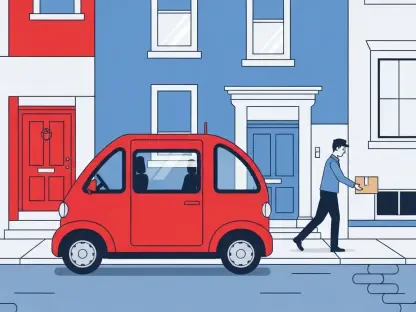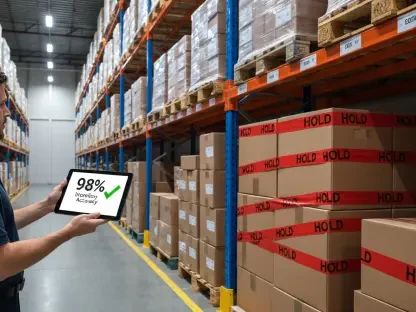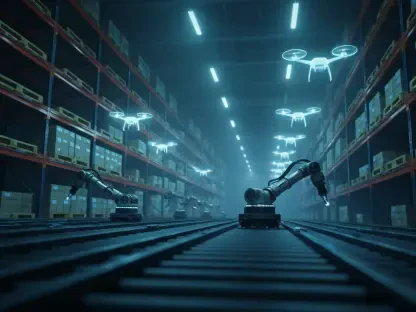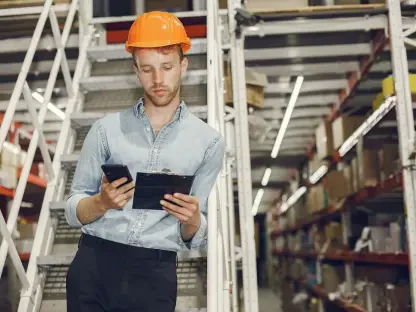In the fast-paced environment of modern warehouses, where heavy machinery and constant foot traffic collide, safety often hinges on the smallest details that can be easily overlooked, and a single misstep or moment of confusion can lead to serious accidents, costing businesses not just in dollars but in employee well-being and operational downtime. Among the most critical yet underappreciated elements of warehouse safety are the markings and signage right beneath workers’ feet. Floor markings, when clear and well-maintained, serve as silent guides that prevent mishaps in high-stakes settings. Far from being mere compliance tools, these visual cues can transform chaotic spaces into zones of order and security. By addressing faded lines or unclear signs with simple, cost-effective updates, warehouse managers can significantly reduce risks. This discussion delves into how such straightforward fixes can make a profound impact, exploring the data behind workplace injuries, pinpointing high-risk areas, and highlighting innovative solutions that prioritize safety underfoot.
Unseen Dangers on the Warehouse Floor
Workplace injuries in warehouses remain a pressing concern, with slips, trips, and falls constituting a staggering 31% of non-fatal incidents as reported by recent data from the Health and Safety Executive (HSE). These accidents often stem from inadequate or worn-out floor signage that fails to alert workers to hazards in real time. Beyond the immediate physical toll, the financial burden is substantial, with each non-fatal injury carrying an estimated cost of thousands in medical expenses, lost productivity, and potential legal fees. The ripple effects extend to intangible losses like diminished morale and reputational harm. When floor markings are unclear or eroded, they cease to function as vital safety tools, leaving employees vulnerable in environments where split-second decisions are critical. Addressing this issue doesn’t require complex overhauls; rather, a renewed focus on maintaining visible, durable signage can prevent many of these incidents before they occur, safeguarding both people and operations.
Another layer of risk emerges from vehicle-related accidents, particularly those involving forklifts, which are a common fixture in warehouse settings. Without distinct markings to delineate forklift routes or warn of blind corners, the likelihood of collisions increases dramatically. These incidents not only endanger workers but also disrupt workflows, leading to costly delays. The HSE data underscores that a significant portion of warehouse accidents involves machinery, often due to a lack of clear visual boundaries. Simple interventions, such as refreshed line marking tape or bold signage indicating restricted zones, can mitigate these dangers effectively. By prioritizing the visibility of critical areas, warehouses can create an environment where both pedestrians and operators navigate with confidence. This proactive approach shifts safety from a reactive checkbox to a fundamental aspect of daily operations, ensuring that risks are minimized through clarity and foresight rather than left to chance.
High-Risk Zones and Targeted Solutions
Certain areas within warehouses pose heightened risks, making them prime candidates for enhanced floor markings. Forklift routes, pedestrian crossings, blind corners, and emergency exit paths often become accident hotspots due to high traffic and limited visibility. For example, a faded “STOP” sign at a corner might fail to alert a rushing worker, while unclear boundaries around forklift zones can lead to dangerous near misses. Emergency exits, if not marked with visible, glow-in-the-dark tape, could become inaccessible during power outages or crises, endangering lives. Targeting these zones with durable, intuitive signage offers an immediate safety boost. Bright, color-coded tapes and bold text like “FORKLIFT AREA” can guide behavior instantly, reducing confusion in high-pressure moments. By focusing upgrades on these critical spots, warehouse managers can address the most pressing vulnerabilities with minimal investment, creating safer pathways for everyone.
Innovative tools also play a pivotal role in modernizing floor safety. Reusable floor-mounted frames, for instance, provide a sturdy alternative to temporary paper signs, allowing for customizable, site-specific messages that withstand heavy use. Anti-slip tapes and glow-in-the-dark options further enhance visibility under diverse conditions, ensuring that safety cues remain effective even in low light or high-wear environments. These solutions go beyond mere compliance, embedding safety into the fabric of daily operations. When markings are designed to be both durable and adaptable, they maintain their relevance over time, resisting the wear that often renders traditional signage obsolete. Implementing such targeted upgrades not only curbs accident rates but also fosters a culture of awareness, where employees instinctively rely on visual aids to navigate risks. This strategic focus on high-risk zones transforms potential danger into structured, manageable space.
Practical Steps for Lasting Impact
Taking action to improve floor safety begins with a thorough visual sweep of the warehouse to identify areas where markings have faded or become ambiguous. This assessment should prioritize spots with frequent incidents or near misses, as well as zones critical to emergency protocols. Once problem areas are pinpointed, replacing outdated signage with durable, high-visibility options becomes the next logical step. Color-coded line marking tapes can delineate specific zones, while bold, easy-to-read signs can reinforce key messages like warnings or directional cues. The goal is to make safety intuitive, ensuring that workers can interpret visual signals at a glance without second-guessing. Such upgrades, though seemingly minor, align with broader operational goals by reducing downtime caused by accidents and enhancing overall workflow efficiency. A systematic approach to refreshing floor markings turns a potential liability into a cornerstone of workplace security.
Beyond initial fixes, sustaining safety requires ongoing vigilance and periodic updates to adapt to changing warehouse layouts or workflows. Floor signage should be treated as a dynamic tool, not a one-time installation, with regular checks to ensure clarity and relevance. Investing in long-lasting materials, such as heavy-duty tapes or frames designed for repeated use, minimizes the need for frequent replacements while maintaining effectiveness. Additionally, engaging staff in safety audits can uncover overlooked hazards, fostering a collaborative environment where everyone contributes to risk reduction. These practical measures, rooted in simplicity, prove transformative when implemented consistently. Reflecting on past efforts, many facilities saw marked declines in incident rates after adopting such strategies, demonstrating that small, deliberate changes yield outsized results. Looking ahead, the focus should remain on integrating these low-cost, high-impact solutions into standard operating procedures for enduring safety gains.









